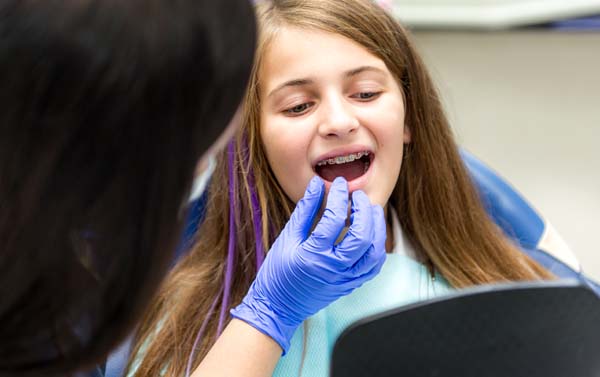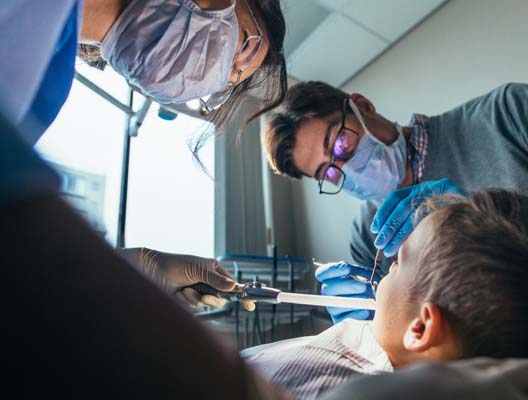Early Orthodontic Treatment vs. Regular Treatment

Early orthodontic treatment is something that a lot of parents will have to consider as their children grow up. Unfortunately, it is pretty common for children to require early care, as there are a lot of uncontrollable factors that contribute to oral health. While it may sound intimidating to parents, it is good to know that modern-day technology has allowed orthodontics to evolve and develop safe and efficient practices for children's teeth.
Although many children are referred for early orthodontic treatment, there are some parents who are unsure of what such treatment entails, and how it differs from traditional orthodontic practices. Thankfully, it is pretty straightforward. Keep reading to get a better idea of the differences and similarities between early and traditional orthodontic treatments.
Understanding how early orthodontic treatment is different
Below is an overview of the main differences and similarities between early orthodontic treatment and traditional treatment. This information can be especially helpful for parents who are considering early orthodontic care for their children.
Differences
The main difference between early orthodontic treatment and traditional treatment is that the first starts at a much younger age, and it tackles a lot of problems that could worsen over time. Simply put, early orthodontic treatment is a kind of preventive treatment. For example, a child who sucks their thumb may end up with protruding teeth later on, which could take longer to treat once the child is old enough to go to a traditional orthodontist. However, if early orthodontic treatment occurs around the age of seven, traditional treatment may not take as long. Additionally, the bad habit would be kicked earlier on, which would ensure better oral health later.
Another difference between the two is that early orthodontic treatment helps lay the foundation for the permanent teeth. Traditional orthodontics typically do not begin until all of the permanent teeth have erupted and grown in. However, early orthodontic treatment begins when there are still baby teeth in the mouth. The advantage of this is that early orthodontic appliances can be used to encourage proper positioning of the permanent teeth.
Similarities
While there are a few major differences between early orthodontic treatment and traditional practices, the bottom line is that orthodontists have the same goal no matter the approach. The goal is to straighten teeth, correct bad bites and ensure each patient has a fully functioning jaw. While each goal can be achieved through both treatment approaches, early orthodontic treatment provides results much quicker and makes it less likely that the child will have to go to a traditional orthodontist in their teenage years. Reducing those chances also helps increase the likelihood that the gums and teeth will remain in good shape throughout the child's adult life.
Getting started with early orthodontic treatment
Early orthodontic treatment can prevent a lot of problems later on down the road. Most parents are hesitant of because early orthodontics can be pretty involved. However, the benefits often outweigh these concerns. To find out more about what treatment entails, reach out today. Any questions or concerns can be addressed, and an evaluation can be done to start the process.
Request an appointment here: https://www.myhawthorneorthodontist.com or call Hawthorne Orthodontics at (310) 921-8333 for an appointment in our Lawndale office.
Check out what others are saying about our dental services on Yelp: Early Orthodontic Treatment in Lawndale, CA.
Recent Posts
A pediatric dentist works with your child to treat their condition and teach them the importance of oral health from a young age. Misalignment and malocclusions are quite common in children and adolescents as their teeth develop. There are several reasons a child might require braces. Treating these conditions early on can help guide their…
Even though braces are common among teenagers, getting them is a new orthodontic experience for every patient. Teens and their parents tend to have many questions about braces and other orthodontic treatments for teens, when to get braces, and what having braces will be like. Here are some of the most common questions orthodontists hear…
Generally, a retainer is the last vital stage of orthodontic treatment. The appliance, made from metal and plastic, is personalized for each patient to fit perfectly into the wearer’s mouth. After braces or other orthodontic devices have corrected the alignment of the teeth, the retainer functions to stop them from shifting back to their previous…
Invisalign® is a common type of invisible braces that is developed by Align Technology. Many dentists around the world have used this treatment to fix dental problems. Invisalign is basically a removable orthodontic appliance. It is often offered as an alternative to traditional solutions. It is a good option for people who want a less…


